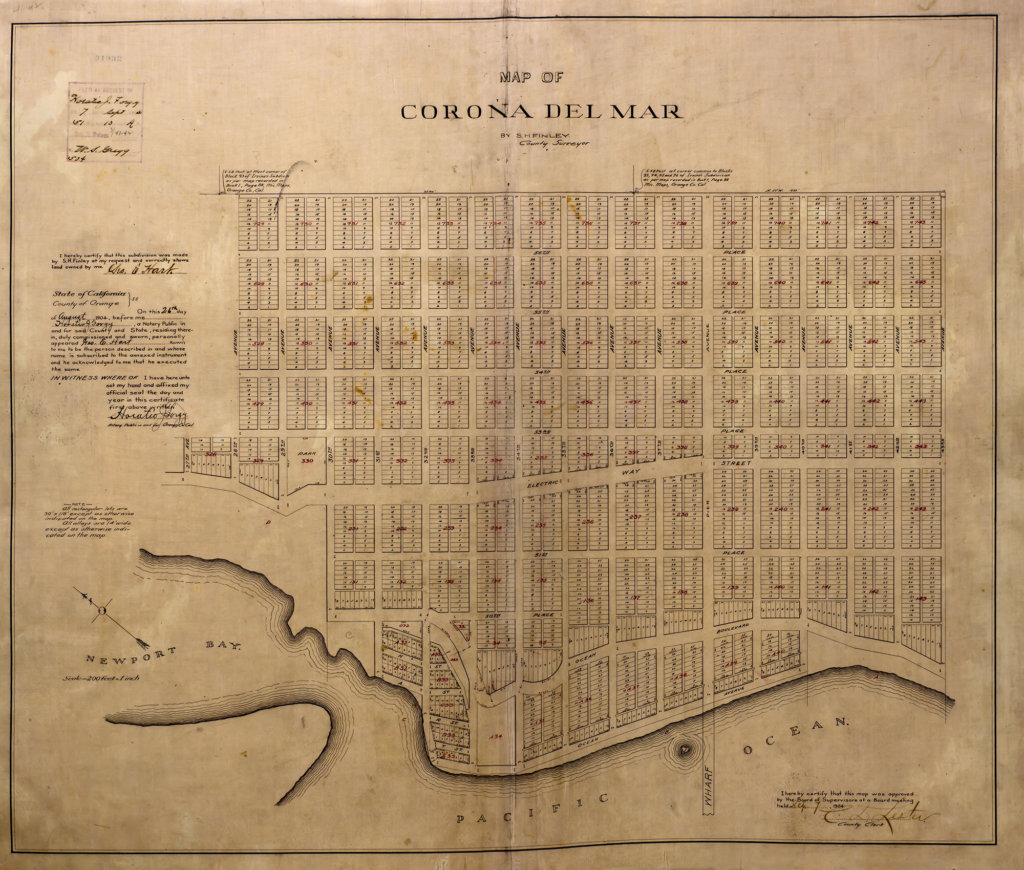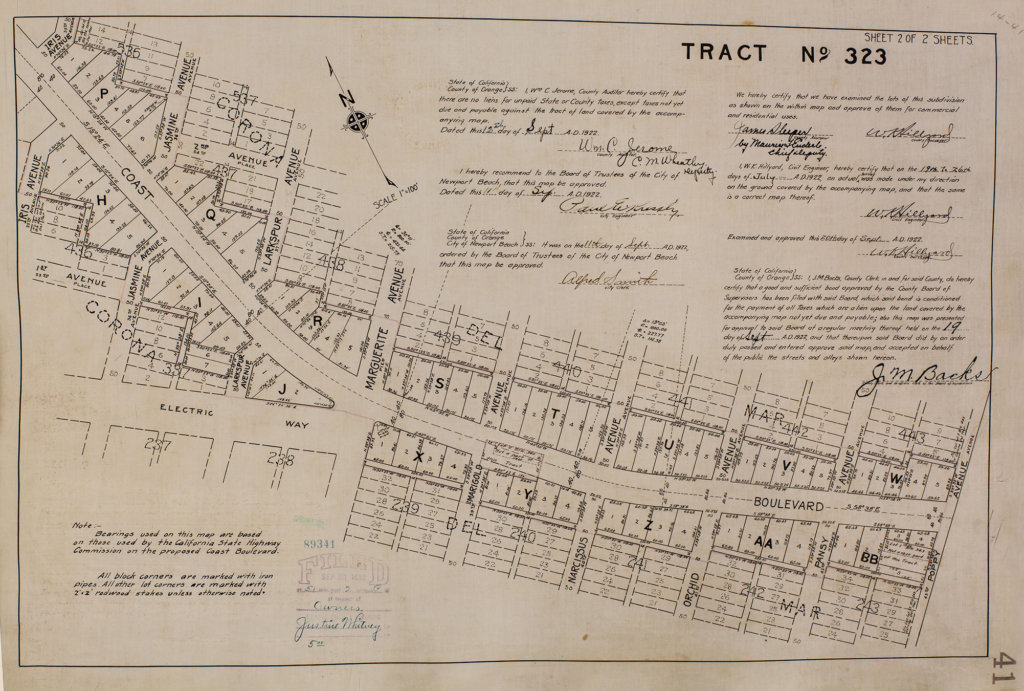You Could Have Lived on Pansy Street: A History of Corona del Mar’s Flower Streets

Paul Wormser, Library Director
If George Hart, the original developer of Corona del Mar, had his way Sherman Library would be on 32nd Street instead of the much more pleasing Dahlia Avenue. So, how were the flower streets of Corona del Mar named? Why does an alphabetical scheme include three sets of duplicates: Avocado and Acacia, Marguerite and Marigold, and Poinsettia and Poppy? How did Hazel get included, after Poppy? And for good measure, do Avocado, Acacia, Fernleaf and Hazel qualify as flowers?
George Hart’s original layout for Corona del Mar named north-south streets with numbers starting at 29th St. and ending with 45th St. This numbering scheme envisioned subdividing land as far west as the bridge over the lower bay, where 1st Street would have been. Hart spent more than a decade promoting Corona del Mar, but with little success. In 1915, he gave up on Corona del Mar, and sold his land to the F. D. Cornell Company.

Hoping to build on the success of the tracks on the nearby Balboa peninsula, the new owners attempted to rebrand Corona Del Mar as Balboa Palisades. As for street names, we can only guess that the company adopted the flower-named streets at the same time. Unlike today, developers in unincorporated areas of the county did not need approvals to change the name of their tract or the street names. The first known appearance of the flower street names is a 1922 re-subdivision map of Corona del Mar, which created lots fronting the newly announced Coast Highway.
The streets as they existed in 1922, started with Acacia and ended with Poppy. All of the street names qualified as flowers. Acacia, while a tree, also produces decorative flowers, so this is probably why it was included. Fernleaf is the most mysterious of the names. According to Erin Aguiar, Sherman Library & Gardens’ Director of Horticulture, Fernleaf probably referred to Fernleaf Yarrow. As for Avocado, it was added later.
So, how did the alphabetically arranged street names then end up with three pairs of names starting with the same letter?
We can make an educated guess when it comes to Marigold and Marguerite. On the original Corona del Mar plat map, the only north-south street not given a numerical name was Pier Street (38th Street was skipped). Pier Street, as the name suggests, lead to an ocean pier. In 1915 when F. D. Cornell Company bought Corona del Mar the pier still existed so they probably renamed the all of the north-south streets, except Pier street. In 1917, however, a storm destroyed the pier, and it was never rebuilt. Not wanting a Pier St. with no pier, the company likely changed the name to Marguerite, a type of Daisy.
The addition of Avocado Street is easier to explain. In 1922, the state announced that the route of Coast Highway would bisect Corona del Mar. With prospect of a renewed interest in Corona del Mar the Irvine Company sold tracts on the west and east ends of the original subdivision to the Sims-Guedel Company. The company named the street running through the western tract Avocado. While avocado trees may not be yield decorative flowers, at least the name stayed in a general botanical theme.

For the eastern tract the company selected Hazel Street. Why Hazel? Hazel is a kind of tree, so perhaps the name was selected to be in keeping with the botanical themes. Or perhaps more likely, it had something to do with two of the owners of Sims-Guedel Company: Hazel Sims and Hazel Guedel.
Finally, why were two streets named for flowers beginning with the letter P? We simply do not know why someone included both Pansy and Poppy Streets. Yes, that’s correct – Pansy and Poppy Streets. What is today Poinsettia Street was Pansy Street, until 1940 when the City of Newport Beach changed the name. The city council minutes do not include a discussion of the matter, so we do not know who pushed for the change. But, the reason was clear. Starting in the 1920s, pansy began to be used as a derogatory term applied to effeminate or weak men. This no doubt made it more difficult to sell homes on this street, leading to the name change.

